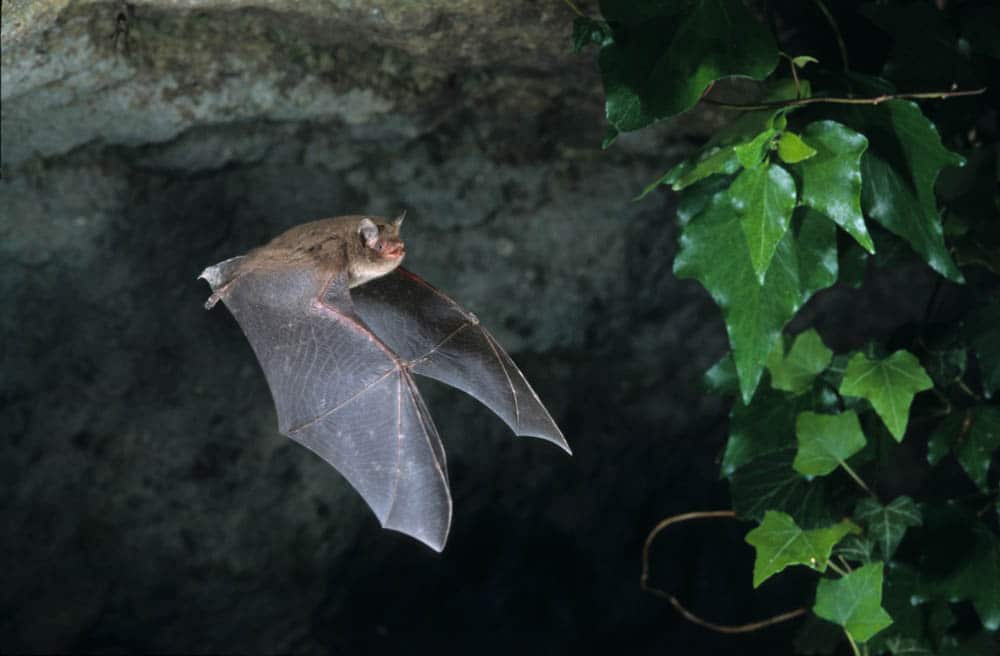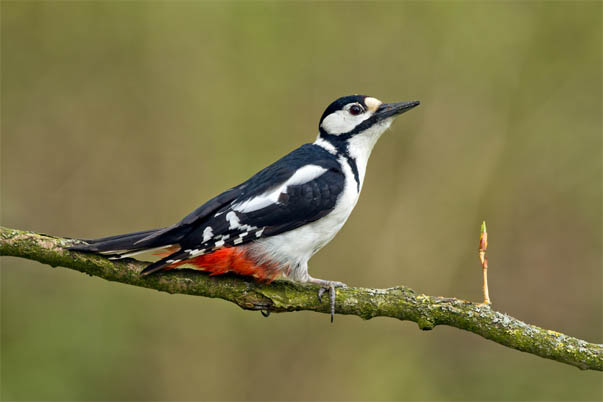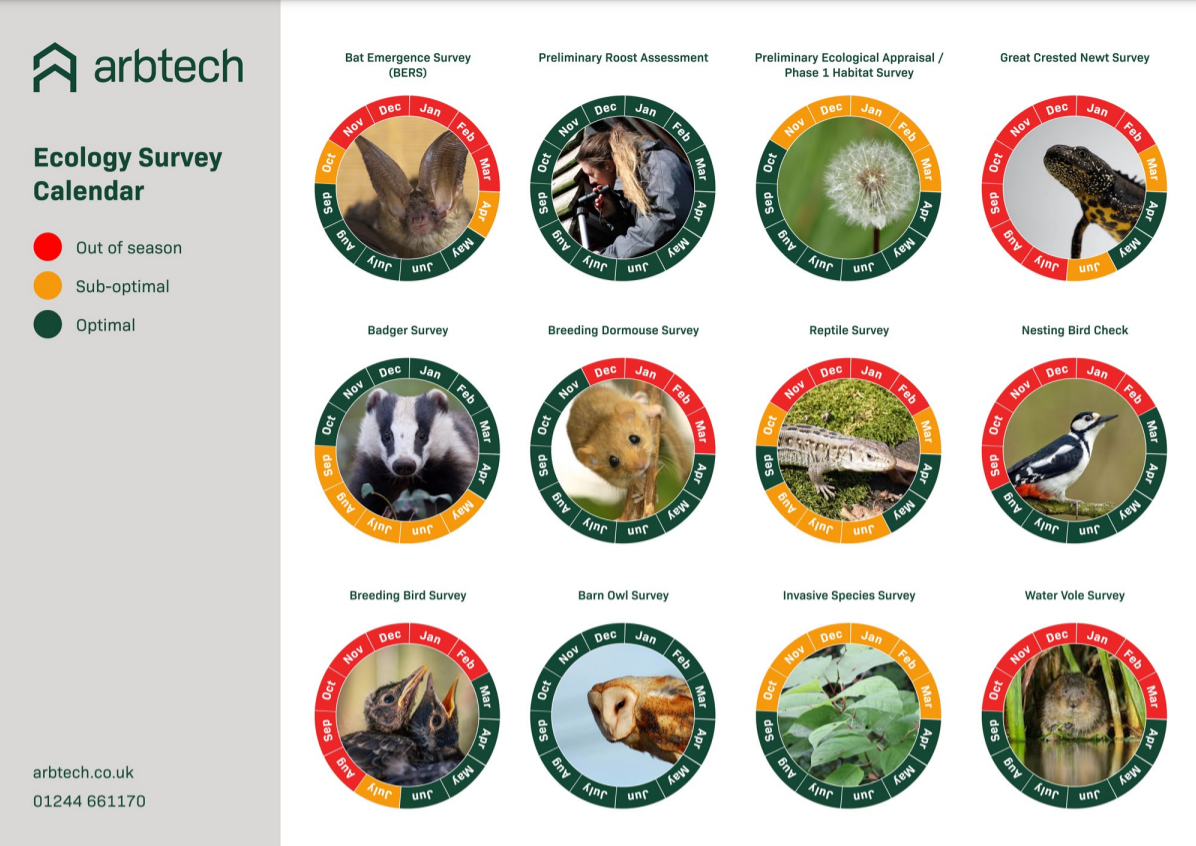Due to a number of factors, such as behaviours of the species in question, geographic location and weather conditions, the majority of ecology surveys can only be carried out at certain times of the year.
Without the necessary protected species surveys, property and land development projects will be unable to progress into future stages, particularly the all-important task of gaining planning permission from the corresponding local planning authority.
The survey calendar for each protected species will vary based on the environmental requirements of the specific animal, habitat suitability, potential roost features and their biological makeup. However, all protected species surveys have a best time – or optimal period – for conducting the assessment, as well as a suboptimal period where it is technically feasible to carry out ecological surveys, and certain months out of season, in nesting season where animal species are in their hibernation roosts and therefore unavailable for analysis.
That said, the varying hibernation behaviours of animals from species to species mean that some may be available throughout the year while others may only be active during winter months, summer months or solely a handful of months all year round. For example, otter surveys and Habitat Suitability Index (HSI) surveys can be undertaken any time in the year and are unaffected by an active season or breeding season.
It could also be the case that further surveys may be required, prompting a handful of ecological survey visits to a different habitat type, if the survey identifies other animal species on the site. If this were to happen and multiple visits were needed, or if you simply want more information on the ecology surveys we offer, you can learn more about our ecological consultancy.
As suitable times play such a significant role in the ability to book ecology surveys, ensuring that seasonal constraints are taken into consideration will guarantee a smooth planning process and prevent unnecessary delays to your project. To benefit the time management of your development project and the likely restrictions of your general project timescales, you will find the survey season of every protected species survey below.
Bat Emergence and Re-Entry Survey (BERS)
Bat Survey Season
Optimal: May to September
Suboptimal: April and October
Out of Season: November to March
Preliminary Roost Assessment (PRA)
PRA Season
Optimal: January to December
Suboptimal: Not Applicable
Out of Season: Not Applicable
Preliminary Ecological Appraisal (PEA) / Phase 1 Habitat Survey
PEA Season
Optimal: April to October
Suboptimal: November to March
Out of Season: Not Applicable

Great Crested Newt Survey
Great Crested Newt Survey Season
Optimal: April to May
Suboptimal: March and June
Out of Season: July to February
(Additionally, it is worth noting that an eDNA survey for great crested newts is typically carried out in the optimum time between April and June)
Badger Survey
Badger Survey Season
Optimal: October to April
Suboptimal: May to September
Out of Season: Not Applicable
Breeding Dormouse Survey
Dormouse Survey Season
Optimal: April to November
Suboptimal: Not Applicable
Out of Season: December to March

Reptile Survey
Reptile Survey Season
Optimal: April to May, September
Suboptimal: March, October, and June to August
Out of Season: November to February
Nesting Bird Check
Nesting Bird Check Season
Optimal: March to August
Suboptimal: Not Applicable
Out of Season: September to February
Breeding Bird Survey
Breeding Bird Survey Season
Optimal: March to June
Suboptimal: July
Out of Season: August to February

Barn Owl Survey
Barn Owl Survey Season
Optimal: January to December
Suboptimal: Not Applicable
Out of Season: Not Applicable
Invasive Species Survey
Invasive Species Survey Season
Optimal: April to September
Suboptimal: October to March
Out of Season: Not Applicable
Water Vole Survey
Water Vole Survey Season
Optimal: April to September
Suboptimal: Not Applicable
Out of Season: October to March
Arbtech Ecology Survey Calendar

Book an Ecology Survey Today
If you have been told you need one of the protected species surveys listed above or are under the impression that any of these animal species are present on your development site, contact Arbtech today to receive your free quote.
Even if the protected species survey you need is seasonally constrained, it can be prearranged for a suitable time in the year. Then, if you decide to go ahead, we can book in a survey with one of our ecologists at the next available opportunity and help you to take the next step in the process of gaining planning permission and completing your planning project.